Smith Flyer Discovered in New Zealand
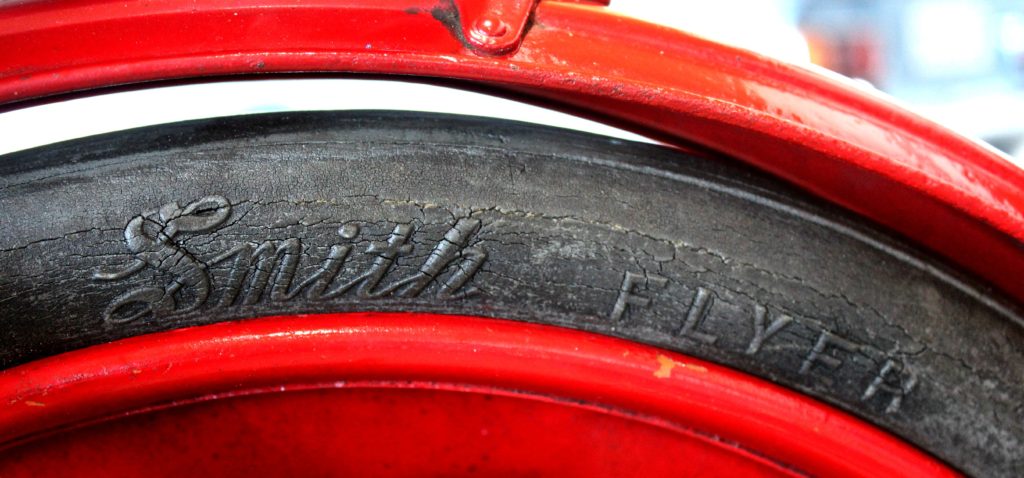
“Stumbling” Across an Amazing Find in New Zealand
Not too long ago, New Zealand residents and motorcycle enthusiasts Craig Eagleton, Brian and Fiona Ferguson were returning from a local vehicle enthusiasts event (carshow) when they took a leisurely ride back to Craig’s house, via Pine Harbour Marina on their Triumph and Kawasaki motorcycles.
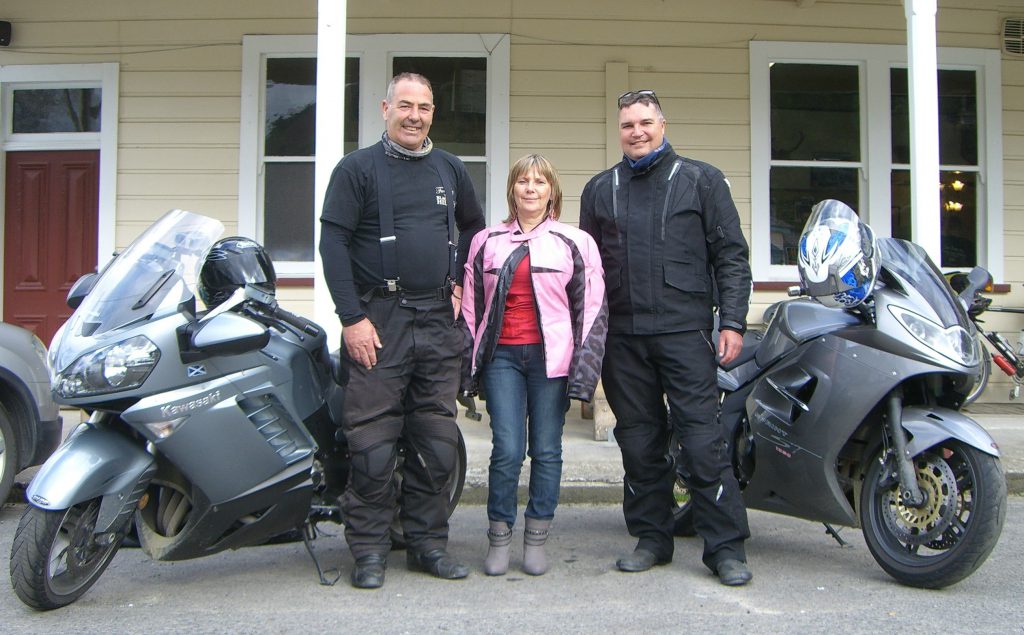
The marina is not very far from where Craig lives in Auckland and they decided to stop for a bite to eat. Riding toward the marina, they came across a new building constructed to house the motorcycle/automobile collection of Mr. Allan Drinkrow
Taking an inquisitive peak at this fine collection of cars, Craig noticed a rather peculiar device in the rear corner of the building. He recognized it immediately as the Smith motor wheel and sent a photograph to his friend, Walter Smith, President of Smith Precision Products Company (Walter’s grandfather was the designer of the Smith motorwheel). Walter’s response was “Thanks Craig, but it is what the motor wheel is attached to that is amazing…that’s a Smith Flyer!!” And so began the journey of discovery to resurrect the history of this wonderful piece of American history that has been residing in New Zealand for nearly one hundred years.
A 1916 Smith Flyer with Model BA Smith Motor Wheel
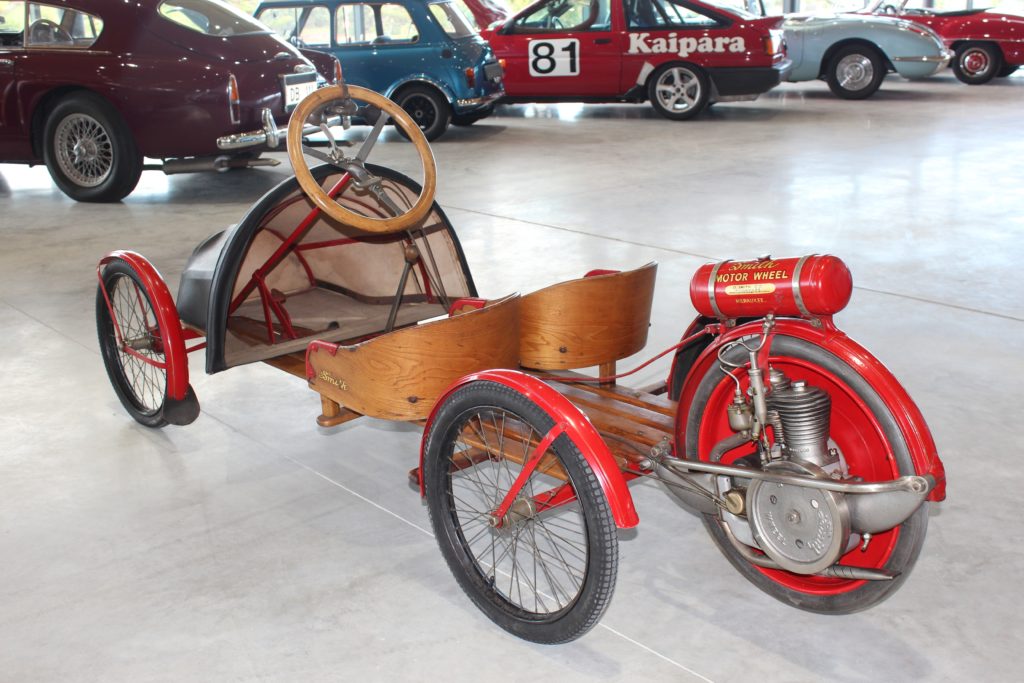
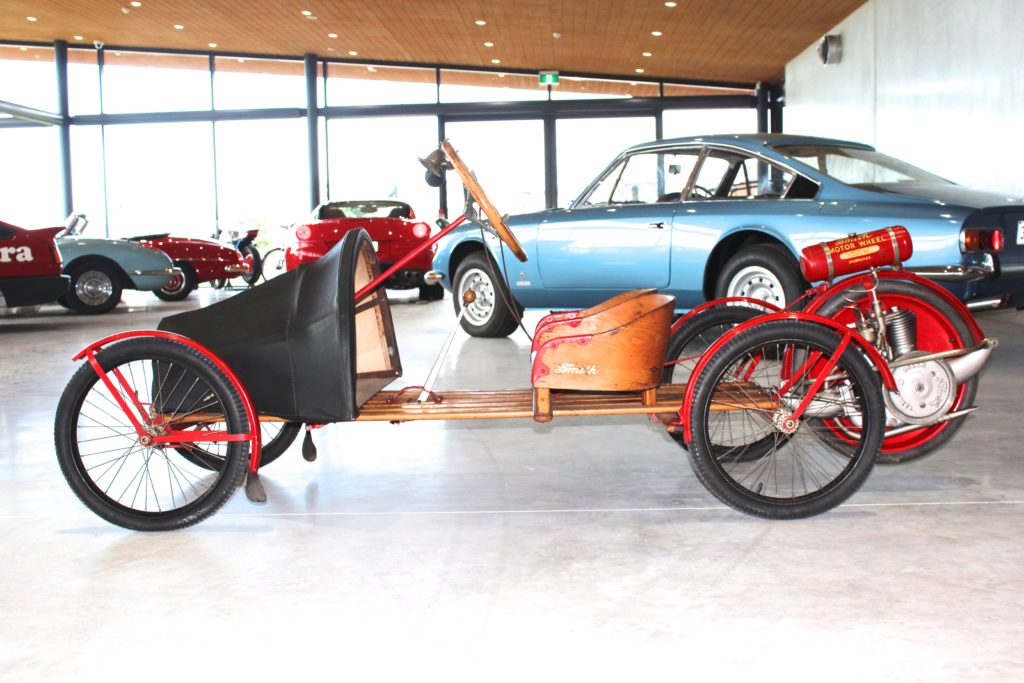
As turns out, Allan Drinkrow is the third owner of this Smith Flyer. It was shipped from the A.O. Smith plant in Milwaukee, Wisconsin to New Zealand in 1916; purchased by a family living in Kumeu, North-West Auckland. Ken Smith, world class race car driver and New Zealand national, purchased the Flyer from the original owners around 1978, then sold it to Allan Drinkrow about twenty five years ago. Allan’s Flyer was the 624th built by the A.O. Smith Corporation. All three owners took great care in maintaining the Flyer as it is in remarkably good condition considering the marine climate of New Zealand.
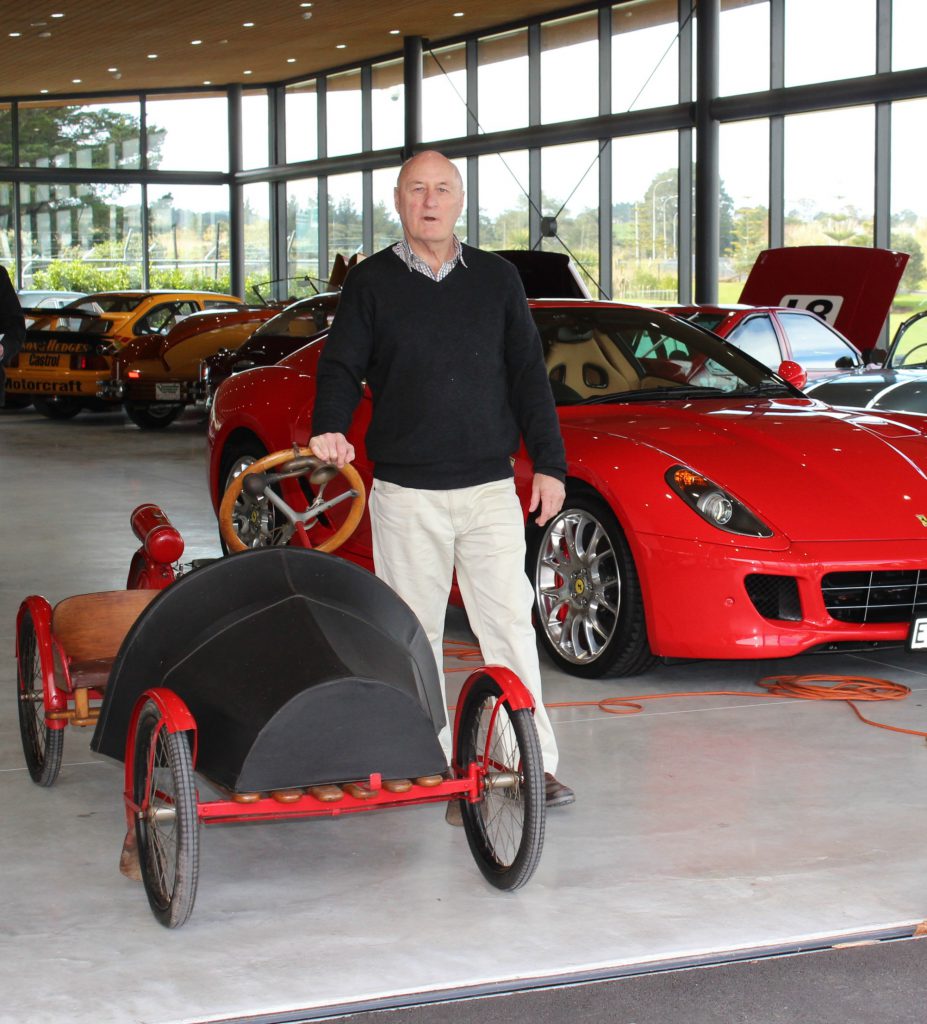
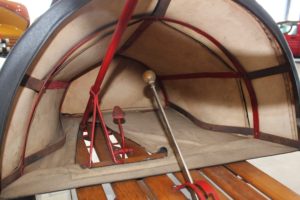
Since Allan has owned the Flyer, it has been kept indoors within a climate controlled and UV-resistant environment. Allan says of his Flyer…”It has always been a runner. Two years ago I dismantled the engine to clean-out the old oil which had sludged badly.
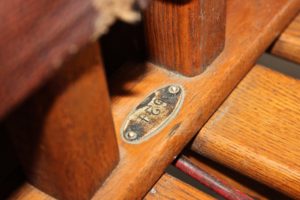
The engine was found to be in as-new condition and had never been dismantled before. The quality of the castings and materials used in the engine are to an incredibly high standard. The crankshaft and camshaft run on tiny tapered roller bearings which are adjustable. The engine had no measurable wear, the car is original throughout.” Allan goes on to say “There are no castings here; but drop-forged components.”
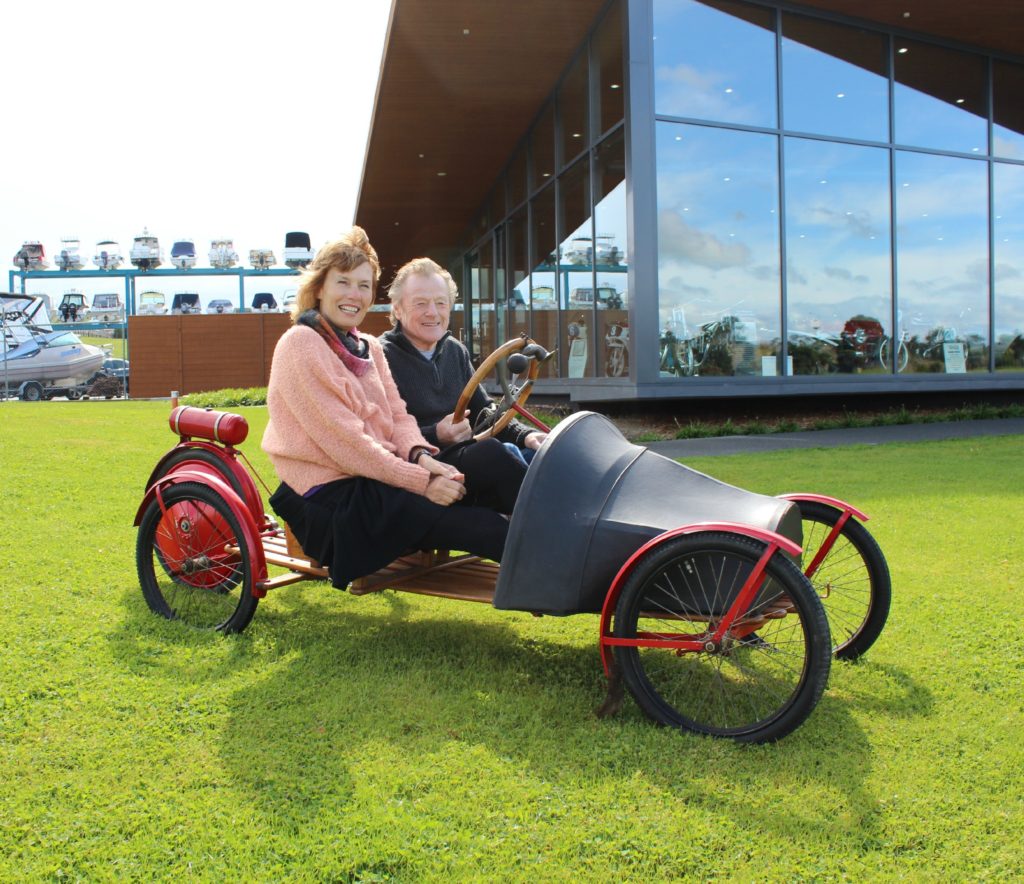
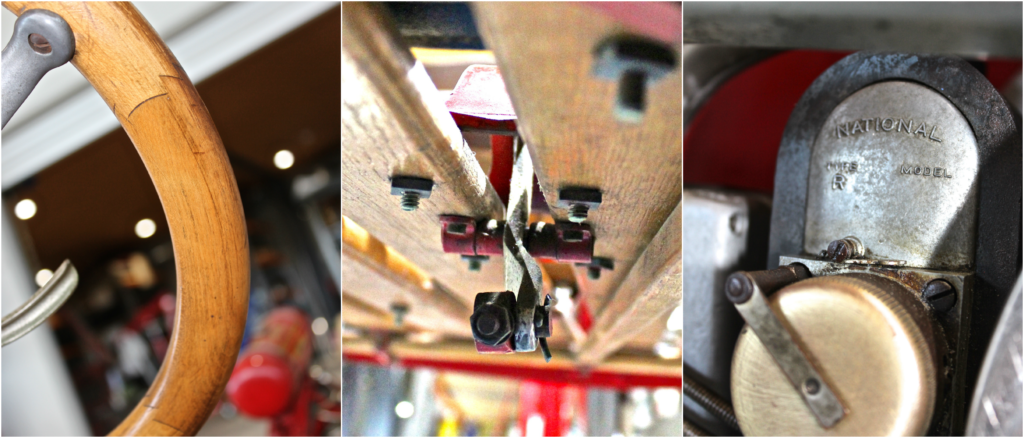
Allan’s Smith motor wheel that powers his Flyer has been identified as a model BA, manufactured from late 1916 through 1917. As improvements were added over the five years A.O. Smith manufactured the motor wheel, new model designations were given for these improvements. The first motor wheel produced in late 1914 was the model A, followed by the model B, then model BA, and lastly the model C. The first Flyers that came off the A.O. Smith assembly line were powered by the model BA Smith motor wheel. It is estimated that 2500 to 3000 Smith Flyers were built and shipped. Today, they are very rare.
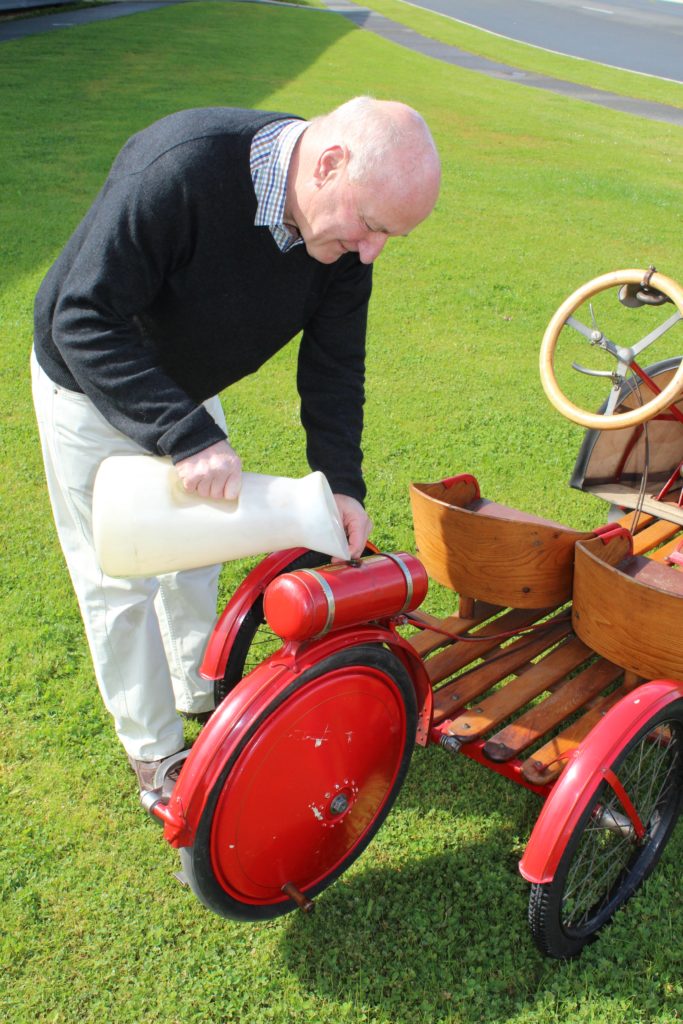
Allan Agrees with Dr. Charles Sinatra
Dr. Charles Sinatra of Jamestown, New York who lovingly restored a Smith Flyer some time ago is credited with the comment “It’s a death trap, but it goes like stink.” Similar comments have been made through the years from other Flyer owners.
Similarly, perhaps the most poignant comment Allan Drinkrow passed on about his Flyer is common knowledge to the lucky few that have dared to drive the world’s first sports car…”I have driven it and would class its handling as border-line dangerous.”
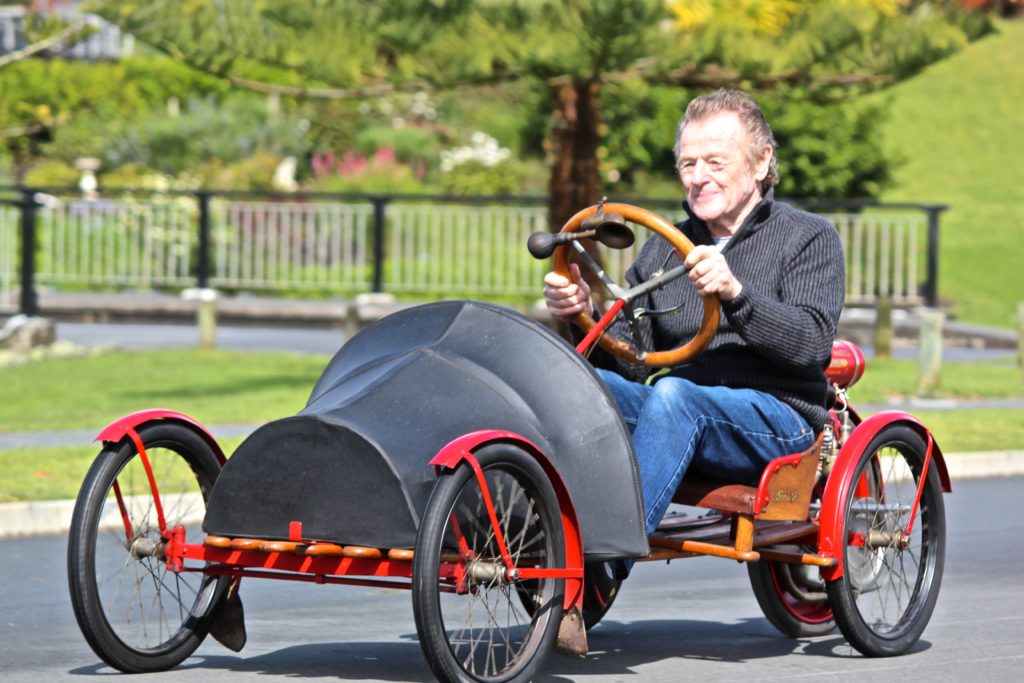
Brief History of the Smith Flyer
The A.O. Smith Corporation first introduced the motor wheel for bicycles in late 1914 (see The Smith Motorwheel- A Restoration From The Heart article posted on this website and years 1914-15 of the Timeline under About Smith Pumps/Family Legacy on the Smith Precision homepage).
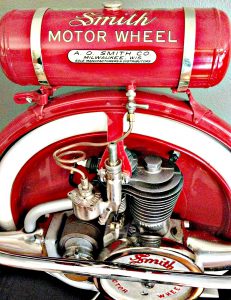
By 1916, the A.O. Smith Corporation was offering a new twist to the motor wheel for bicycles. The Company designed a very small and lightweight chassis made from wood (buckboard chassis), added a steering wheel, two bucket seats, a foot brake, four wire-wheels, and attached a Smith motor wheel behind the vehicle to power it. The vehicle was called the Smith Flyer and was dubbed the world’s first sports car.

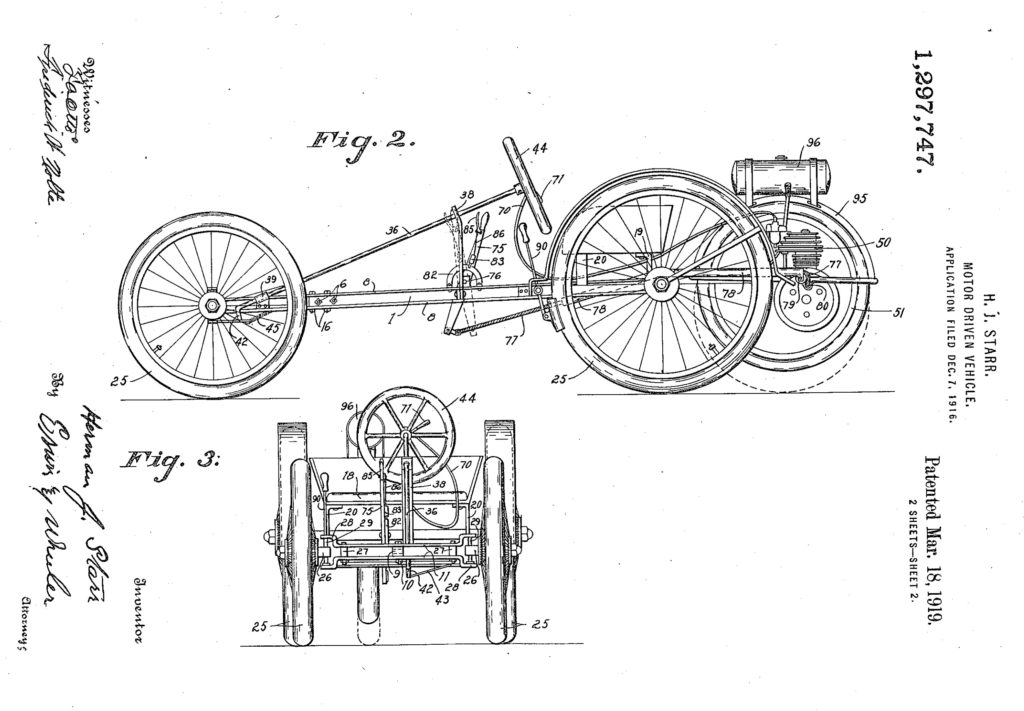
The basis for the design of the Flyer chassis came from a patent filed by Herman Starr, a resident of Iowa at the time. This patent was processed by the patent attorney Erwin Wheeler, well known to the A.O. Smith Corporation, and promptly assigned to the Company. While the Starr design forms the basic Flyer, the production Smith Flyer utilized a unique wooden chassis, braking system, and steering control, unlike the Starr design.
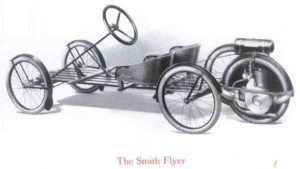
As the Starr design clearly shows a Smith motor wheel as an integral part of the patent drawings, more than likely a collaborative effort was put forth between Mr. Starr and the A.O. Smith Corporation during the initial design and patent filing phase.
With the motor wheel in the rear, a lever was provided so the driver could raise the pivoted motor wheel off the ground for starting. Once started, the driver was seated and the motor wheel was lowered to the ground; off the Flyer went with a minimum speed of 7-8 mph.
To stop the Flyer without shutting down the engine, the driver engaged the lever to raise the motor wheel off the ground while at the same time applying the foot brake. A throttle-control was also provided so the driver could regulate the speed of the motor wheel. The throttle was attached to the steering wheel. An engine decompression lever was also provided so the engine could be shut down if required.
Some Specifications
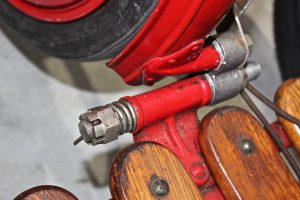
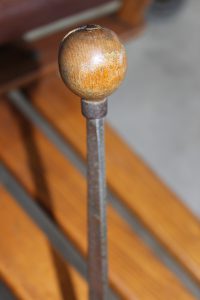
The entire Flyer with motor wheel weighed 135 pounds. The wheel base was 62 inches with overall length including the motor wheel at 98 inches. Top speed was about 20 mph. The seats were upholstered in Morroccoline leather. The entire body was polished natural wood with mud guards, rims, axles, steering column, braces, and other metal parts finished in enamel red.The hubs and wheel spokes were nickel plated. Later improvements to the Smith motor wheel used for the Flyer included a blower cooling fan for the engine.
In 1918 the F.O.B. Milwaukee, Wisconsin price was $145.00 for the Flyer chassis and $225.00 for both Flyer chassis and motor wheel.
In 1919, the Smith Flyer and motor wheel manufacturing rights were sold to the Briggs and Stratton Corporation. Briggs and Stratton made several design changes to the Flyer/motor wheel and continued to sell them under their name for a few more years.

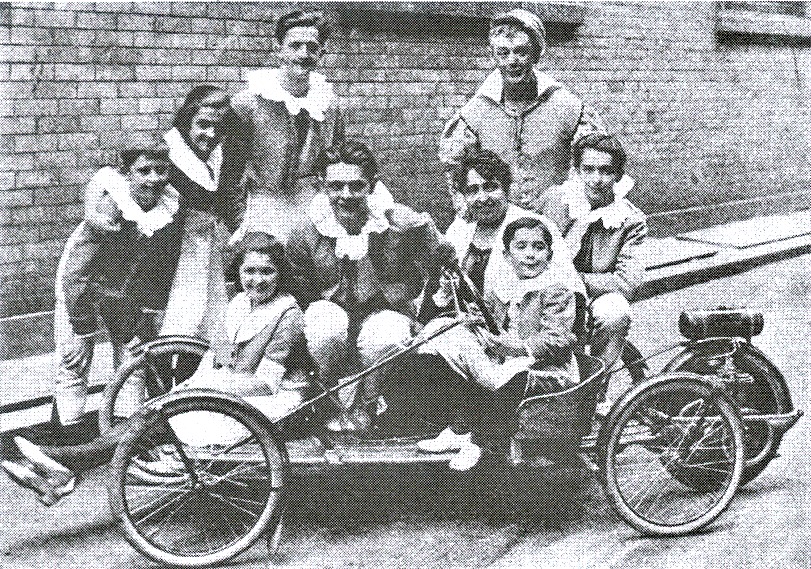
Addendum
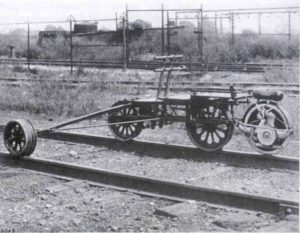
The Flyer chassis was not the only form of vehicle powered by the Smith motor wheel. The motor wheel was also used to power various railroad inspection and maintenance vehicles.
The Flyer chassis could even be modified for use in the snow. For an extra $15.00, interchangeable sled runners were available for the Flyer, produced by the A.O. Smith Company as an option.
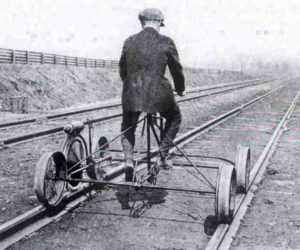
Allan Drinkrow’s Flyer is equipped with a black leather wind cowl and horn attached to the steering wheel. While it is not clear if the A.O. Smith Corporation provided wind cowls or horns as options, both are period pieces in their own right and masterfully crafted.
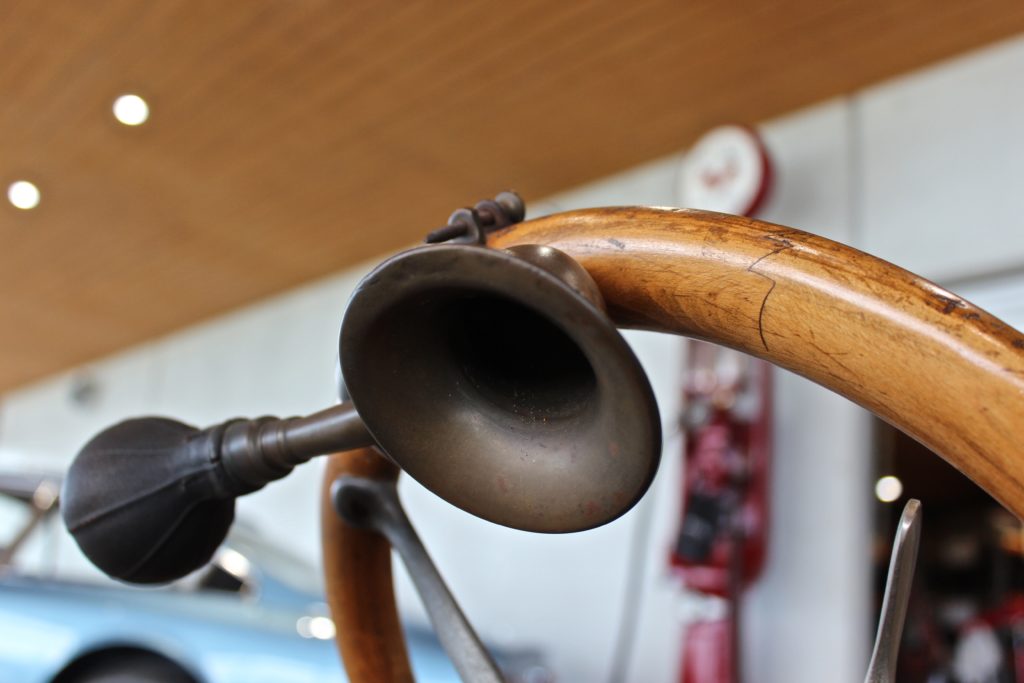
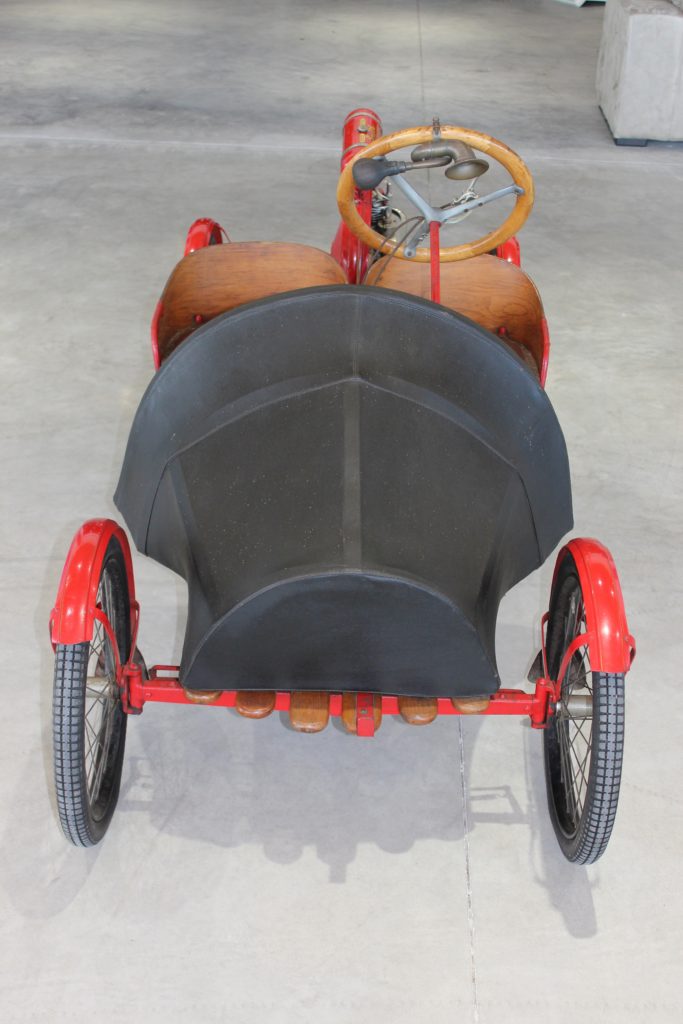
Thank-Yous
We would like to thank Allan Drinkrow for allowing us close access to his Flyer. Without his passion for automobiles and keen interest in preserving the history of the Smith Flyer, this article could not have been produced. Ken Smith is also key to the preservation of this Flyer and we thank him for the great care he invested in it when he owned the vehicle. We are also thankful of his fine tuned driving skills as only a few would have the courage to get into the drivers seat and lower the motor wheel to the ground. A very special thank you also goes to Linda Wills who took the photographs used in this article. Linda’s ability to capture the craftsmanship of the Flyer is a gift not many have. Last but not least, Craig Eagleton along with Brian and Fiona Ferguson “discovered” Allan’s Flyer which led to Walter Smith’s involvement. Thank you Craig, Brian, and Fiona!
Website article author: Walter W. Smith
Website article editor: Paulina Alfaro
